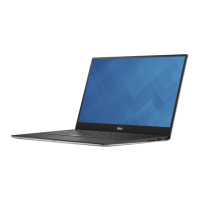Table 33. System Setup options—Passwords menu(continued)
Passwords
Hard Drive Password
NOTE: On some computers, the M.2
PCIe SSD-0 Password option is
shown.
The hard drive password can be set to prevent unauthorized access of the
data stored on the solid-state drive. The computer prompts for the hard drive
password during boot in order to unlock the drive. A password-secured hard
drive stays locked even when removed from the computer or placed into another
computer. It prevents an attacker from accessing data on the drive without
authorization.
The following rules and dependencies apply when the Hard Drive Password or
M.2 PCIe SSD-0 Password option is used.
● The hard drive password option cannot be accessed when the hard drive is
disabled in the BIOS Setup.
● The computer shuts down when idle for approximately 10 minutes at the hard
drive password prompt.
● The computer shuts down after three incorrect attempts to enter the hard
drive password and treats the hard drive as not available.
● The hard drive does not accept password unlock attempts after five incorrect
attempts to enter the hard drive password from the BIOS Setup. The hard
drive password must be reset for the new password unlock attempts.
● The computer treats the hard drive as not available when the Esc key is
pressed at the hard drive password prompt.
● The hard drive password is not prompted when the computer resumes from
standby mode. When the hard drive is unlocked by the user before the
computer goes into standby mode, it remains unlocked after the computer
resumes from standby mode.
● If the system and hard drive passwords are set to the same value, the hard
drive unlocks after the correct system password is entered.
Dell Technologies recommends using a hard drive password to protect
unauthorized data access.
Password Configuration
The Password configuration page includes several options for changing the
requirements of BIOS passwords. You can modify the minimum and maximum
length of the passwords as well as require passwords to contain certain character
classes (upper case, lower case, digit, special character).
When the Lower Case Letter option is enabled, the password requires at least
one lower case letter.
When the Upper Case Letter option is enabled, the password requires at least
one upper case letter.
When the Digit option is enabled, the password requires at least one numeric
digit.
When the Special Character option is enabled, the password requires at least
one special character from the set: !”#$%&’()*+,-./:;<=>?@[\]^_`{|}~.
When setting Minimum Characters for password length, Dell Technologies
recommends setting the minimum password length to at least eight characters.
NOTE: To view this option, enable Advanced Setup mode as described in
View Advanced Setup options.
Password Changes
Allow Non-Admin Password Changes The Allow Non-Admin Password Changes option in BIOS Setup allows an
end user to set or change the system or hard drive passwords without entering
the administrator password. This gives an administrator control over the BIOS
settings but enables an end user to provide their own password.
By default, the Allow Non-Admin Password Changes option is enabled.
For additional security, Dell Technologies recommends keeping the Allow Non-
Admin Password Changes option disabled.
94 BIOS Setup

